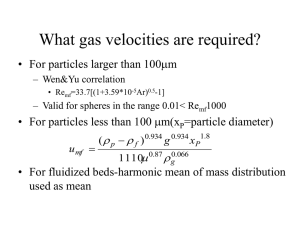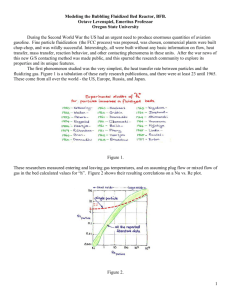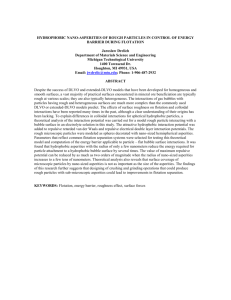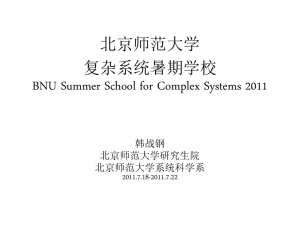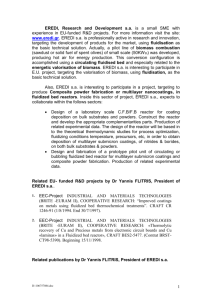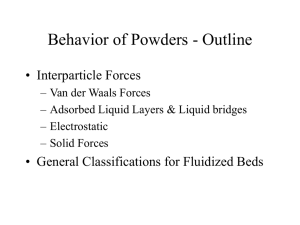flotation in a fluidized bed: observations on particle
advertisement
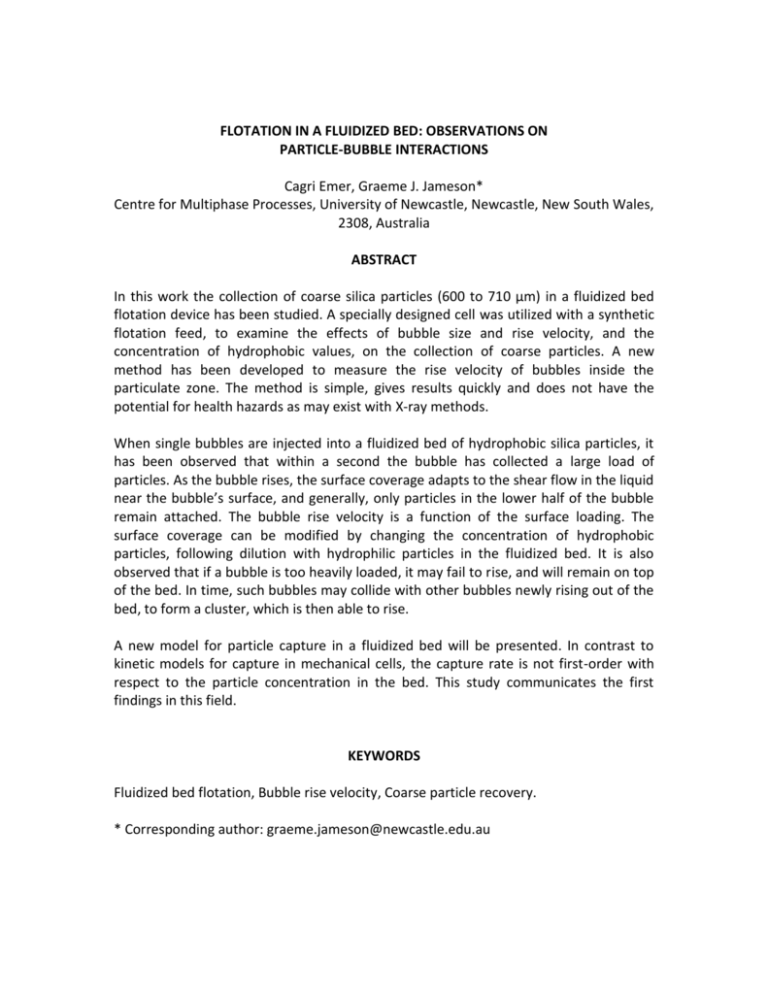
FLOTATION IN A FLUIDIZED BED: OBSERVATIONS ON PARTICLE-BUBBLE INTERACTIONS Cagri Emer, Graeme J. Jameson* Centre for Multiphase Processes, University of Newcastle, Newcastle, New South Wales, 2308, Australia ABSTRACT In this work the collection of coarse silica particles (600 to 710 µm) in a fluidized bed flotation device has been studied. A specially designed cell was utilized with a synthetic flotation feed, to examine the effects of bubble size and rise velocity, and the concentration of hydrophobic values, on the collection of coarse particles. A new method has been developed to measure the rise velocity of bubbles inside the particulate zone. The method is simple, gives results quickly and does not have the potential for health hazards as may exist with X-ray methods. When single bubbles are injected into a fluidized bed of hydrophobic silica particles, it has been observed that within a second the bubble has collected a large load of particles. As the bubble rises, the surface coverage adapts to the shear flow in the liquid near the bubble’s surface, and generally, only particles in the lower half of the bubble remain attached. The bubble rise velocity is a function of the surface loading. The surface coverage can be modified by changing the concentration of hydrophobic particles, following dilution with hydrophilic particles in the fluidized bed. It is also observed that if a bubble is too heavily loaded, it may fail to rise, and will remain on top of the bed. In time, such bubbles may collide with other bubbles newly rising out of the bed, to form a cluster, which is then able to rise. A new model for particle capture in a fluidized bed will be presented. In contrast to kinetic models for capture in mechanical cells, the capture rate is not first-order with respect to the particle concentration in the bed. This study communicates the first findings in this field. KEYWORDS Fluidized bed flotation, Bubble rise velocity, Coarse particle recovery. * Corresponding author: graeme.jameson@newcastle.edu.au
